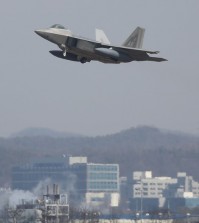- California Assembly OKs highest minimum wage in nation
- S. Korea unveils first graphic cigarette warnings
- US joins with South Korea, Japan in bid to deter North Korea
- LPGA golfer Chun In-gee finally back in action
- S. Korea won’t be top seed in final World Cup qualification round
- US men’s soccer misses 2nd straight Olympics
- US back on track in qualifying with 4-0 win over Guatemala
- High-intensity workout injuries spawn cottage industry
- CDC expands range of Zika mosquitoes into parts of Northeast
- Who knew? ‘The Walking Dead’ is helping families connect
S. Korea joins world’s biggest astronomical telescope construction

This virtual image shows the expected look of the Giant Magellan Telescope under construction on Las Campanas in Chile. When completed, it will be the world’s largest astronomical telescope.
(Courtesy of Korea Astronomy & Space Science Institute)
By Yoon Sung-won
Korea is taking part in a global project to build the world’s largest astronomical telescope in Chile, the nation’s astronomy research institute said Wednesday.
Korea Astronomy & Space Science Institute (KASI) said the Giant Magellan Telescope Organization (GMTO), joined by 10 global institutes including KASI, has started construction of the Giant Magellan Telescope on top of a mountain in Chile called “Las Campanas.”
“It is a great honor to join the construction of the world’s largest telescope. The institute will expand cooperation with astronomers at home and abroad to observe the deepest parts of the universe and to discover its secrets,” said KASI President Han In-woo.
When completed, the Giant Magellan Telescope will have seven reflecting mirrors. It will have six times the light-condensing capacity of the current largest telescope and can provide up to 10 times clearer images than the Hubble Space Telescope.
Its purpose ranges from looking for a planet similar to the Earth from relatively close stellar systems to detecting rare cosmic phenomenon such as light refraction by black holes. The institute said that the new telescope is expected to reveal the existence of celestial bodies created by the Big Bang 13.8 billion years ago.
The new telescope will be fully operational by 2024, the institute said.
Korea, Brazil, Australia, Chile and the United States have participated in the global project. About $1 billion has been earmarked for the project, said Edward Moses, the chief of GMTO.
Astronomy professor Wendy Freedman, who also chairs the board of directors of the GMTO, said, “The new telescope will discover the first celestial body that created light since the birth of the universe and reveal a second earth where people can survive.”
















